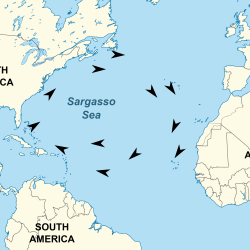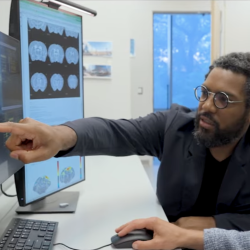Seeking out the hidden pathways of an essential sense
“Odors have a power of persuasion stronger than that of words, appearances, emotions, or will." ― Patrick Süskind
The sense of smell is often called our most primitive sense. Its pathways connect to brain areas associated with primal responses such as fear and sexual attraction. Odors can produce strong instinctive responses, some of which take place unbeknownst to us, in the subconscious mind.
Scientists have long wondered how our brains process information about odors, and Biology Prof. Ricardo Araneda is an expert in the field. In Araneda’s lab, researchers at all levels of experience, including several undergraduate students, work together on experiments designed to reveal how odors are processed in the olfactory bulb. This multilayered structure transmits odor information from the nose to the brain. The Araneda team studies how other brain areas interact with the olfactory bulb.
In a series of experiments described in a September 3 research paper in the Proceedings of the National Academy of Sciences, the Araneda research team showed for the first time that a group of neurons, or nerve cells, in the basal forebrain have the ability to control the olfactory bulb, and to alter an animal’s odor perception.
In the first experiment, UMD graduate student Alexia Nunez, now a postdoctoral fellow at the University of Colorado, inserted a light-sensitive protein into inhibitory neurons – nerve cells that stop or slow down the firing of other nerve cells – in this basal forebrain region, called the diagonal band of Broca. Nunez then used blue light to stimulate these inhibitory neurons in the basal forebrain. Stimulation with this blue light dampened the firing of neurons in the olfactory bulb.
Next the researchers used genetically engineered viruses to target the same inhibitory neurons in the basal forebrain. Once injected into live mice, these viruses had no effect until a synthetic drug activated them. At that point, the genetically engineered viruses did what they were designed to do: they halted electrical activity in the inhibitory neurons in the basal forebrain that connected back to the olfactory bulb.
The mice remained healthy and active. But could the research team show that by shutting down the basal neurons, they had affected the olfactory bulb in a way that altered the animals’ sense of smell?
They could. Undergraduate biology honors student Robert Maurer daubed odors found in bananas and similar fruits onto wooden blocks, and offered them to the mice, which normally can tell these odors apart. Maurer, now at Temple Medical School, found that when the synthetic drug had turned off the mice's basael neurons, the animals could not distinguish between two similar, fruity odors.
The experiments show, for the first time, that inhibitory neurons in a portion of the basal forebrain play a critical role in processing odor signals from the olfactory bulb, Araneda said. The nerve fibers in this region connect with many other parts of the brain, and most of the neurons there are excitatory, he said; they turn on when animals are learning and exploring their environment. But the study opens the door to intriguing possibilities about the role of inhibitory neurons.
As the research continues, laboratory graduate student Richard Smith said, the work can ultimately help scientists understand how olfactory signals, mediated by the brain, convey different sensations to different people. For example, one day we may learn why—no matter what Shakespeare said—the same rose does not smell as sweet to everyone.
-UMCP/CMNS-
Alexia Nunez-Parra, Robert K. Maurer, Krista Krahe, Richard S. Smith, and Ricardo C. Araneda, “Disruption of centrifugal inhibition to olfactory bulb granule cells impairs olfactory discrimination,” in Proceedings of the National Academy of Science, Aug. 19, 2013.
Photo: Robert K. Maurer







